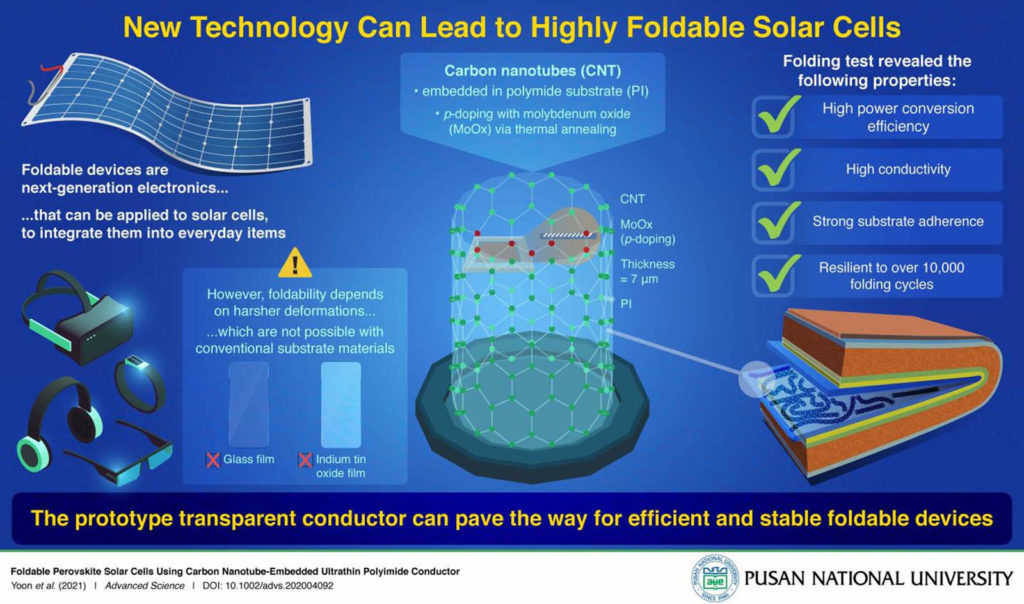Researchers at Pusan National University, Rep. of Korea, have built on recent developments in foldable electronics and phone screens to develop a foldable technology in solar panels. A key requirement for an efficient foldable conductor is the ability to withstand the pressure of bending within a very small radius while maintaining its integrity and other desirable properties. In short, a thin, flexible, transparent, and resilient conductor material is needed.

An international team of researchers have found a solution in single-walled carbon nanotube (SWNT) films, owing to their high transparency and mechanical resilience. The only problem is that SWNTs struggle to adhere to the substrate surface when force is applied (such as bending) and require chemical doping. To address this problem, the scientists embedded the conducting layer into a polyimide (PI) substrate, filling the void spaces in the nanotubes.
Researcher Prof. Il Jeon says, “Unlike merely flexible electronics, foldable devices are subject to much harsher deformations, with folding radii as small as 0.5 mm. This is not possible with conventional ultra-thin glass substrates and metal oxide transparent conductors, which can be made flexible but never fully foldable.”
To ensure maximum performance, they also “doped” the resulting material to increase its conductivity. By introducing small impurities (in this case, withdrawn electrons to molybdenum oxide) into the SWNT-PI nanocomposite layer, the energy needed for electrons to move across the structure is much smaller, and hence more charge can be generated for a given amount of current.
Their resulting prototype far exceeded the team’s expectations. Only 7 micrometers thick, the composite film exhibited exceptional resistance to bending, almost 80 percent transparency, and a power conversion efficiency of 15.2 percent, the most ever achieved in solar cells using carbon nanotube conductors.
The research was published recently in the journal Advanced Science.
 TEXTILES.ORG
TEXTILES.ORG


